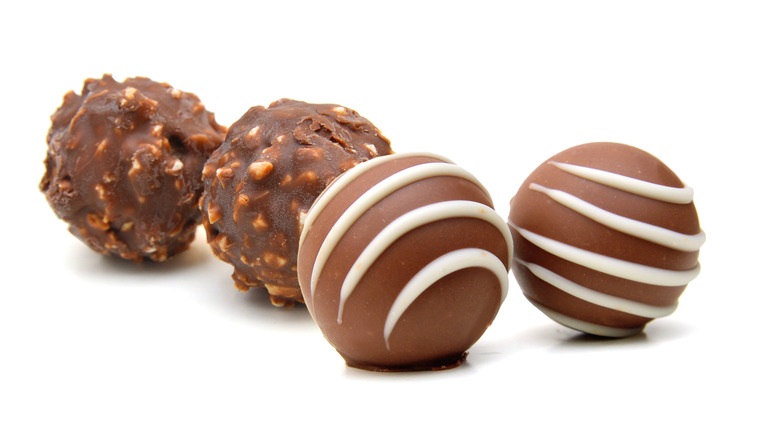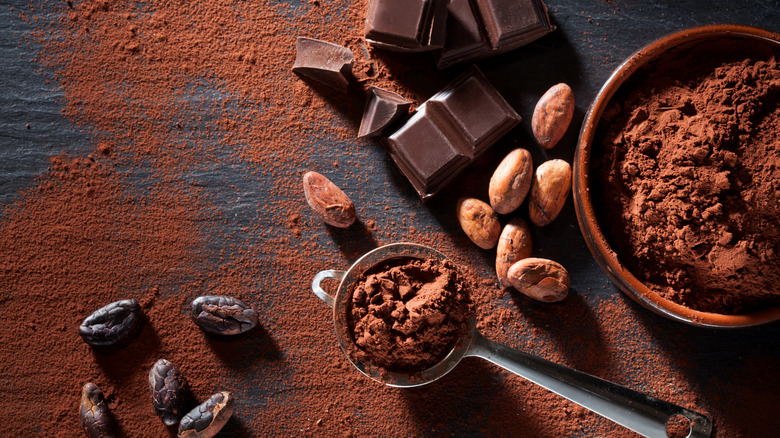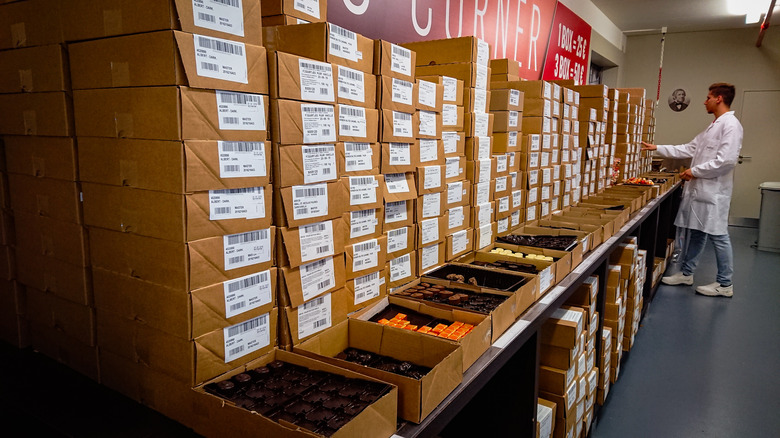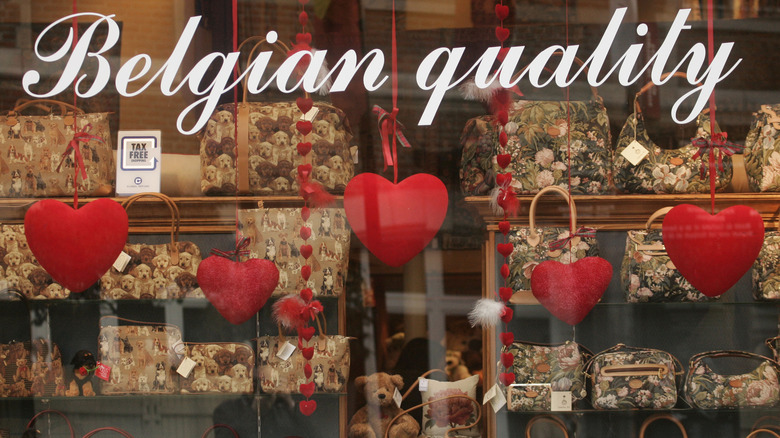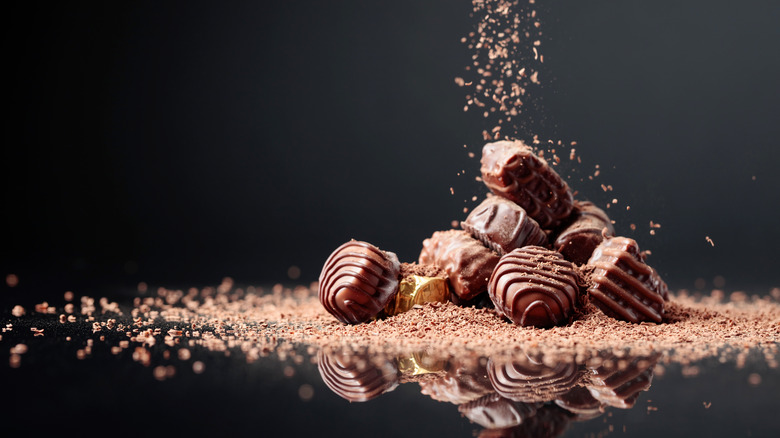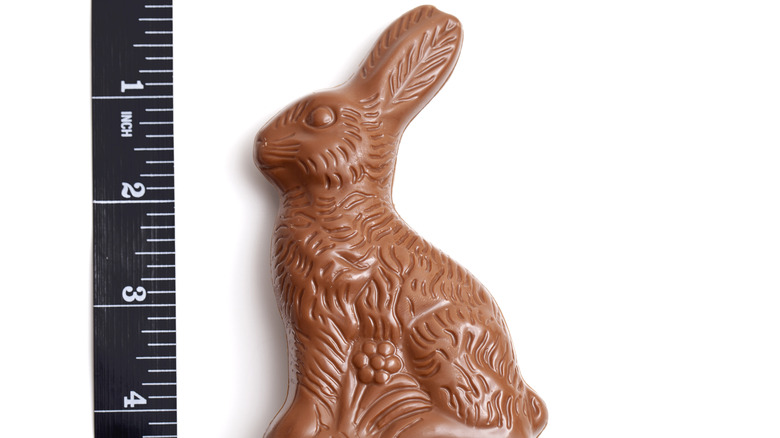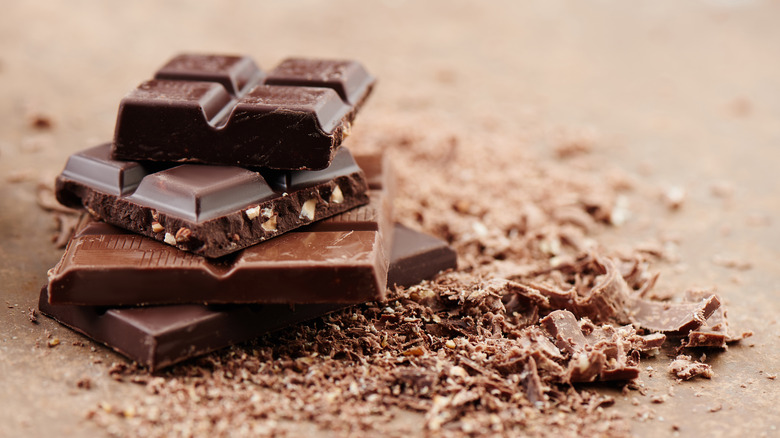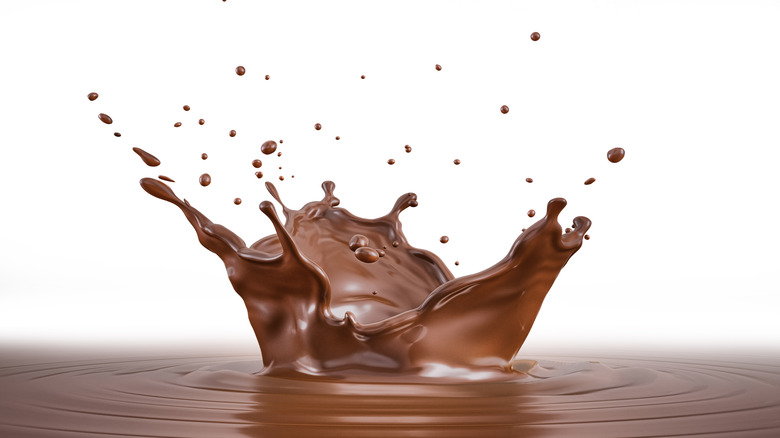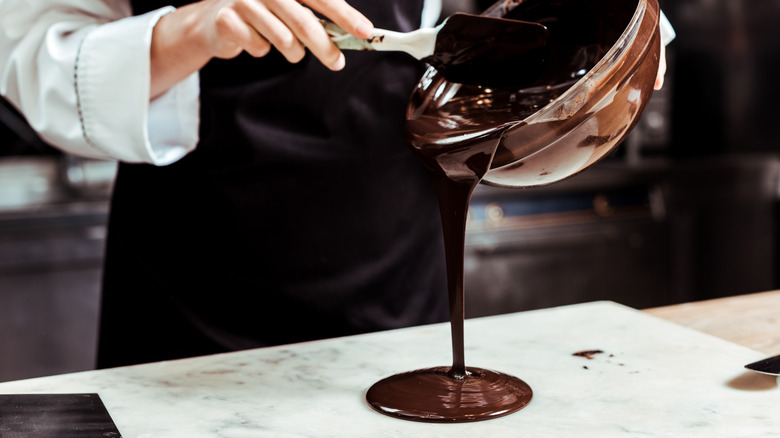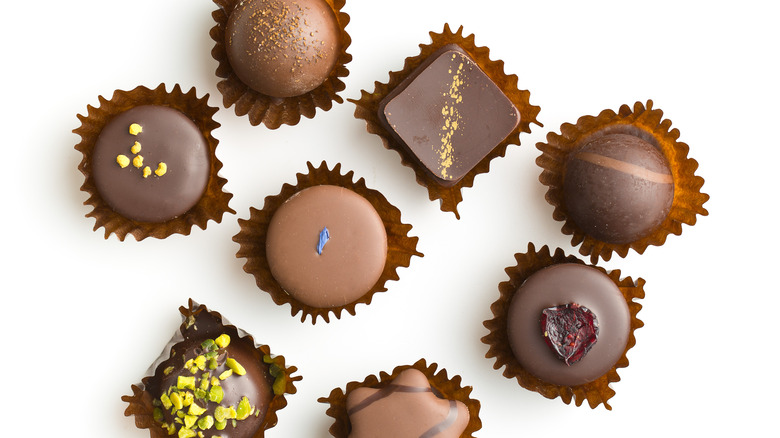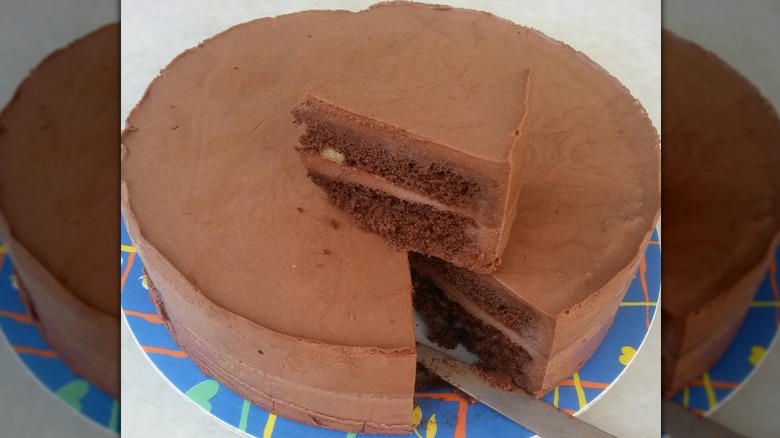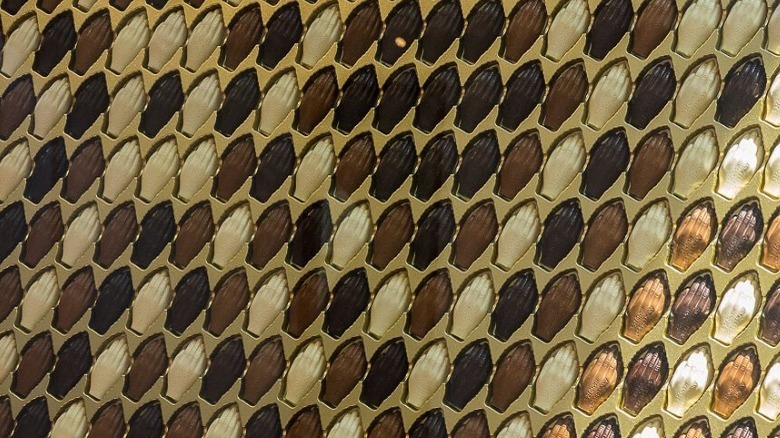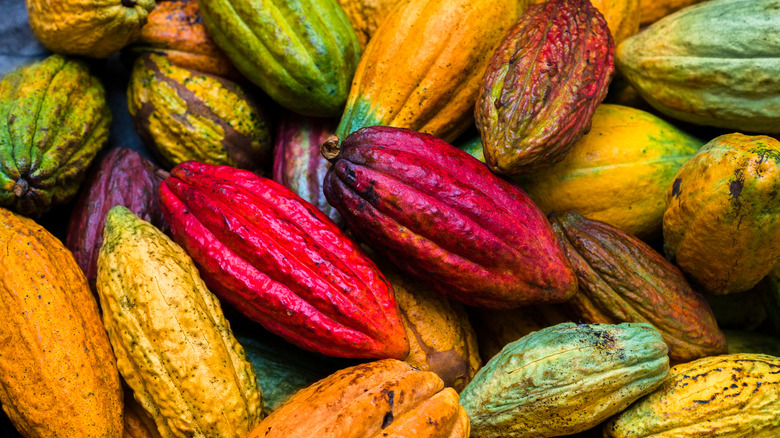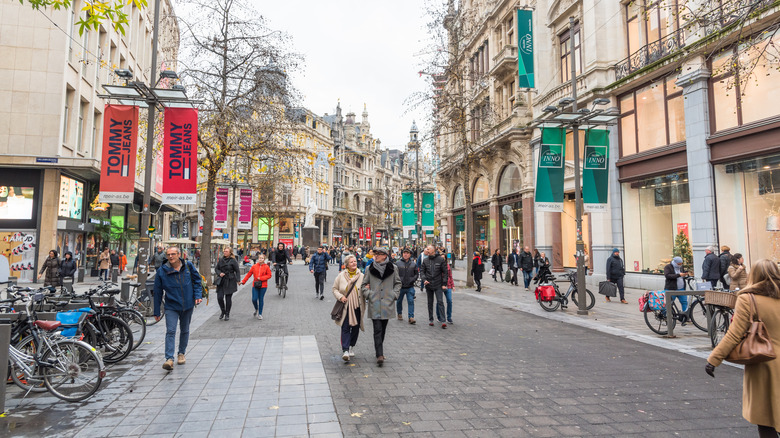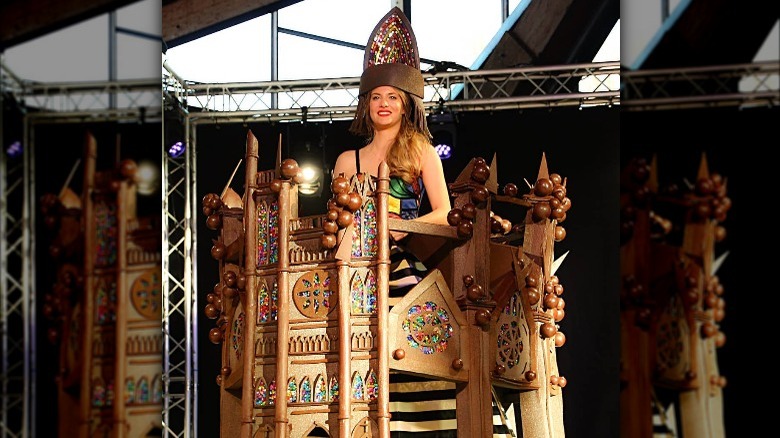Why Belgian Chocolate Is So Good
European chocolate traditions run the gamut from the gianduja (read: Nutella) of Italy to the milk chocolate of Switzerland to the hot chocolate of Vienna. And yet whenever European chocolate is evoked, one nation seems to rise to the top: Belgium. The country is recognized the world over for the quality, variety, and sheer volume of its chocolate production.
It must be said that part of what has lent Belgium such a phenomenal chocolate reputation begins with its unsavory colonial past. Indeed, reports Belgian Smaak, the Belgian colonization of the Congo and subsequent proximity to Angola — home, according to Pilot Guides, to some of the best cocoa beans in the world — was what gave the nation a leg up in importing chocolate as early as the late 19th century. Given its early access to the ingredient, Belgians quickly began developing the techniques to produce high-quality chocolate, and even the Swiss, Belgian Smaak asserts, gleaned much of their chocolate knowledge from the Belgians.
From their long history of chocolate-making to modern innovations, here are the reasons Belgian chocolate is so darn good.
Belgium has been making chocolate for a very long time
Belgium's colonial past and subsequent early access to cocoa paved the way for the nation's mastery of the art of chocolate. But according to the American Oil Chemists' Society, or AOCS, Belgium's first brushes with cocoa predate even its presence in Africa. It was thanks to Spanish explorers returning from South America that Belgium got its first taste of the ingredient. Since the Spanish nobility ruled Belgium in the 17th century, the first chocolate would have graced Belgian lips at this time. According to Culture Trip, the Swiss Henri Escher recalled being served hot chocolate in Brussels as early as 1697; he would bring the delicacy home to Zurich with him, thus beginning a bitter(sweet) rivalry of chocolate domination between the two nations.
Spanish influence aside, AOCS notes, it wasn't until the late 19th century and the advent of Belgium's colonial presence in the Congo that Belgian cocoa cultivation shifted to West Africa. It was here — by capitalizing on the labor of enslaved people — that Belgium began producing large quantities of chocolate.
Belgians make a lot of chocolate
A big part of Belgium's global chocolate dominance is merely a numbers game. According to AOCS, Belgium produces more than 270,000 metric tons of chocolate every year and is home to more than 2,000 chocolate shops, including some of the most iconic worldwide. Godiva, one of the world's most famous chocolate shops (via The Real World), is based in the Belgian capital of Brussels. And Belgium isn't keeping all that chocolate to itself: In 2017, Belgium's $3 billion in chocolate exports ranked it as the world's second-biggest exporter of chocolate, according to the Daily Mail.
But quantity isn't the only factor, here. According to Belgian Smaak, Belgium's geographical location at the crossroads of Europe means that people have long passed through and bought a box or two of chocolate for loved ones, bringing the goods — and their reputation — home with them. In so spreading the wealth, so too has Belgium's reputation for great chocolate been spread around the world.
Belgium has long been at the forefront of chocolate innovation
Given the long-time presence of chocolate in Belgium, it's perhaps no surprise that Belgian chocolatiers have also innovated quite a few chocolate-making techniques. Jean Neuhaus (who, it must be said, was actually a Swiss native) was one of the first to innovate on the Belgian chocolatescape, according to Culture Trip, when he began selling dark chocolate at his pharmacy in Galérie de la Reine in Brussels in 1857. According to AOCS, however, Neuhaus' bitter chocolate bars weren't being sold as a treat, but rather as a health remedy, due to the health benefits of dark chocolate. But despite their framing as a health food, consumers were far more interested in chocolate for its taste, and, EuroTunnel reports, Neuhaus began glazing some of his remedies in chocolate to make the bitter pills easier to swallow.
And that's not all. Soon, according to AOCS, the pharmacist's chocolate became so popular that he focused his attention away from medicines to become perhaps Belgium's first true chocolatier.
The Belgians invented the chocolate bonbon
Belgium's most famous chocolate offering is the praline, featuring a soft, creamy filling encased in a chocolate shell. Belgian pralines are usually dubbed bonbons elsewhere in the world (via AOCS) – and it's these candies that were invented in Belgium. But don't get confused by the nomenclature. Belgian pralines, according to Discover Benelux, are not to be confused with North American pralines or French praliné, the latter of which, according to Cavaletti, is a mix of ground, sweetened nuts and chocolate.
The year 1912 is notable for two reasons when it comes to Belgian chocolate history. It was when Jean Neuhaus passed away, according to EuroTunnel, and it's the same year his grandson, also named Jean, created the first praline. Folks went wild for them immediately. Three years later, Jean's wife, Louise Agostini, helped elevate the delicious treats to a luxury status, according to Visit Flanders. She came up with the idea of packaging them in a decorative "ballotin" or box tied with a ribbon, which cemented their luxe appeal.
Belgian chocolate is protected by law
European products from Champagne to Parmesan cheese are protected by law, and the same goes for Belgian chocolate. Beginning in 1884, according to The Real World, laws began to be passed to protect the quality of Belgian chocolate, requiring, for instance, that it be made with at least 35% pure cocoa. In 2008, ConfectioneryNews.com reports, a new code was developed to protect the image and reputation of Belgian chocolate, requiring that any chocolate labeled as Belgian must be refined and molded in Belgium.
It's worth noting that the rules protecting Belgian chocolate aren't particularly strict; the roasting of the beans, for example, does not necessarily have to take place in Belgium, according to ConfectioneryNews.com. Indeed, according to The Chocolate Journalist, many characteristics and qualities commonly attributed to Belgian chocolate can also be applied to any other type of chocolate, and the quality of Belgian chocolate is really up to the individual producer. But since according to the Daily Mail, Belgian chocolatiers attend specific schools to learn their trade, it's perhaps no surprise that Belgian chocolate stands out.
Belgian chocolate generally has a higher cocoa content
While chocolate varies greatly from producer to producer, there are a few characteristics that tend to make Belgian chocolate stand out. One essential one is its higher cocoa content. According to Asher's Chocolate Co., Belgian tends to be darker and more bitter than Swiss chocolate, for instance, which is usually milkier and thus lower in cocoa. (It must be said that Swiss milk chocolate is nothing to turn one's nose up at and is quite famous, according to House of Switzerland.)
Belgian chocolatiers also stand out in their refusal to use cocoa butter replacements, which the European Union has nevertheless permitted since 2000. While chocolatiers in other parts of the EU can (and do) substitute up to 5% of the cocoa butter in their chocolate with vegetable fats like palm oil or shea butter, according to AOCS, Belgian chocolatiers use 100% cocoa butter, which results in the smoother finish.
A special technique called conching gives Belgian chocolate a sought-after texture
There's another element of Belgian chocolate-making that contributes to its phenomenal texture: a technique known as conching. Conching is a process whereby the chocolate is heated and mixed for up to 78 hours, according to AOCS, which removes any undesirable flavors by way of evaporation. And while other countries use conching, certain techniques unique to Belgium including a balancing liquid conching and dry conching — the latter of which is nearly absent from the process of making Swiss chocolate, for example. This allows Belgian chocolate to take on a more caramelized flavor and a unique body, according to AOCS.
"Belgian chocolate has become famous by the optimization of conching to drive off flavors we don't want in the final chocolate," Mark Adriaenssens of Belgium's Barry Callebaut, the largest chocolate factory in the world, told the outlet. "The balance between dry and liquid conching develops the particular caramelized flavor of a good Belgian chocolate."
Belgian chocolate-making is a competitive field
Given Belgian chocolate's international renown, it's no surprise that Belgian chocolatiers are highly competitive — both with one another and on a global scale. In 2021, Togo Matsuda took top prize as Belgian Chocolate Master, where he faced off with two other Belgian chocolatiers in five different competitions, all of which were related to the theme of reshaping chocolate for tomorrow. Some of his creations, according to official reports from the contest, included a chocolate bonbon combining kaffir lime, orange, and speculoos, as well as a chocolate sculpture depicting a whale emerging from the depths of the sea.
The win earned Matsuda the right to represent Belgium in the World Chocolate Masters, which will take place in October 2022 and give Matsuda the opportunity to compete in his chosen trade against expert chocolatiers from around the world. A win could even further cement Belgian's international renown as a center for chocolate-making.
Immigrants have lent international flair to the world of Belgian chocolate
The most recent Belgian Chocolate Master, Togo Matsuda, hails from Japan, according to Brooden Banket — and he's not the only émigré to bring unique flair to the world of Belgian chocolate of late. Indeed, the BBC reported in 2012 that Belgium's chocolate scene was already evolving thanks to the arrival of international chocolatiers like Ryan Stevenson, a two-time Belgian Chocolate Master from Australia, and Yasushi Sasaki, a Japanese pastry chef and chocolatier in Brussels. Sasaki told the outlet that international arrivals "could pose a threat" to the dominance of traditional Belgian chocolatiers, but at the time, food writer Willem Asaert disagreed. He told the BBC that the arrival of so many international chocolatiers on Belgium's chocolate scene was actually a sign that Belgium's chocolate dominance and reputation were being preserved.
"This won't be the end of the Belgian chocolate industry," he told the outlet. "On the contrary, it's just the proof that we are the best area in the world when it comes to chocolate."
The Grand Cru cake makes grand use of Belgian chocolate
As an article from Vice points out, Belgian chocolate is really worth celebrating on several levels; it is produced in Central Europe from a South American fruit that is now grown in Africa. The grand cru cake seems to take this rich tradition of chocolate in stride, and confirms that with so much diverse influence and tradition, of course, there would be many Belgian desserts that make use of the cacao bean. From top to bottom, from inside to out, this cake is best described in one word: decadent. In fact, just one glance confirms everything one needs to know about this dessert.
The cake is, as described by the Vice article as a mouthwatering chocolate ganache cake that is then coated in dark chocolate. It is as Vice says, "edible jewelry." There's just as much beauty as there is flavor! This is certainly not the dessert for those who prefer uncomplicated and light. Though the Pierre Marcolini confectionary may be known for some of the best macarons in Paris, in Belgium they make sure to do as the Belgians! The store offers up bites and glimpses of its own grand cru straight from Brussels to the rest of Belgium, France, and Luxembourg with two-day shipping. Considering the amount of history behind this dessert, and the quality that this chocolate is known for, 14€ may be a hefty, yet worthwhile price to pay when given the chance to enjoy a feast of history and geography.
Some Belgian chocolate molds are controversial
Belgian chocolate often comes in many shapes, it's not uncommon to find smiling faces and peeing boys (yes, it's a bit strange), as noted by Atlas Obscura. One that might be a bit more striking in the display case is the severed hand known as Antwerpse handjes or Antwerp hands. Surrounding these chocolates is a heated discussion of the past and present, intention and creation. The chocolate hands were first conceived in the 1930s by a chocolatier who entered a baking contest with a nod to the city's popular myth of a brave Flemish soldier who severed the hand of a brutal giant (via The Brussels Times).
The chocolate unfortunately hearkens to another aspect of Belgian culture, namely its colonial state in the Congo. The Belgian Congo was a harsh place where life for the Congolese functioned under a brutal and violent slave state. The severing of hands was a routine punishment for women, men, and children alike.
It's no surprise that chocolate hands, often sold in milk and dark chocolate form, would cause an outcry online and in real life. While the Mayor of Antwerp asserts, in an article with The Brussels Times, that the chocolate has nothing to do with colonial history, American sociologist Jenny Folsom asserts that the symbolism is "never misplaced" on Africans. The fact that the Congo acted as a gateway for Belgium to cacao, as noted by Encyclopedia Britannica, also leaves a bitter taste on the tongue.
There is a major push to make Belgian chocolate more sustainable
In the long stride towards a better, more environmentally-friendly world, there is a major push to make Belgian chocolate more sustainable. As a 2020 report from the Belgium Ministry of Foreign Affairs observes, the present focus for the country's cacao industry is sustainability. The big questions of the day seem to be not only how to make chocolate production environmentally sustainable, but also how to ensure that cacao farmers in export countries receive fair wages.
Though this report from the Ministry just barely predated the Covid-19 pandemic, a follow-up article in 2021 from The Brussels Times notes that despite the rise in living costs, sustainability remains just as prevalent in people's minds, and 83% of Belgians now recognize the Fairtrade label. The same article mentions that the market share for Fairtrade cocoa has more than doubled in the last two years, from around 7% to 15%, despite difficulties in the global supply chain.
Although Belgian Fairtrade chocolates aren't in the majority yet, the title is inarguably recognizable. A survey used in the article found an astonishingly 83% of Belgians can recognize the Fairtrade label. Major chocolate labels like Guylian are also jumping into the ring when it comes to sustainability. The large chocolate manufacturer, which is best known for nautically-shaped chocolates, is seeking to ambitiously align completely with the global ethical movement, which means completely Fairtrade chocolate and carbon neutral goods.
There's still confusion as to what makes Belgian chocolate truly Belgian
Even though there are existing laws in place to assure a high-quality and concrete definition of what makes Belgian chocolate "Belgian," there still persist many knock-offs of this beloved chocolate. Although there are laws in place defining what this chocolate really is, there's still a lot of wiggle room within the country itself. After all, Belgian chocolate means first and foremost being produced in Belgium (via Puratos). While this does a lot to centralize the chocolate to Belgium, it leaves a noticeable gap between high- and low-quality chocolate.
What separates "real" Belgian chocolate from "ersatz" Belgian chocolate is the amount of cacao and cacao butter used; the high-quality and artisanal chocolate will use solely cacao butter and cacao (via Together Magazine). In end effect, distinguishing fake from real is no harder than looking at the label. Together Magazine credits the rise of the tourist centers as key players in what they describe as the "Chocolate Wars." These centrally-located shops will solicit to unwitting tourists and offer illegal chocolate tastings in order to make their sale, which puts, as per the argument, more reputable chocolate makers at financial risk. But, it's not just in the tourist centers of Brussels where chocolatiers face challenges of authenticity (via The Independent). Vague labels like "Belgian Royal Flavour" and "Belgian Recipe" applied to foreign chocolate allude to all the thrills of the artisanal chocolate with none of the frills that define it.
Le Salon du Chocolat offers space to celebrate chocolate
Belgium celebrates chocolate in all forms at its chocolate festival "Salon du Chocolat," which is held in Brussels every February (via Taste Atlas). The three-day event is the perfect pit stop for chocolate enthusiasts of all kinds and is sure to satisfy any sweet tooth. While Belgium may reign supreme when it comes to chocolate, the Salon du Chocolat really is a love letter to European chocolates, as Carnifest describes, the festival features chocolate from well over 70 producers and chocolatiers of varying nationalities.
As the sites describe, a big part of the festival is having the opportunity to sample said chocolates! Perhaps only slightly less enticing than eating those chocolates is the chance to see how they're made. The festival affords a rare opportunity to participate in chocolate-making workshops, learn sleights of hand and recipes with the guidance of some of Europe's best chocolatiers. Carnifest describes the specialty conference as a massive event that turns into a space of artistic culinary creation. This becomes less of a poetic comparison when taking into the fact one of the highlights of the event is a chocolate-themed fashion show that features Belgian and international designers and chocolate-makers taking their creations to the runway.
